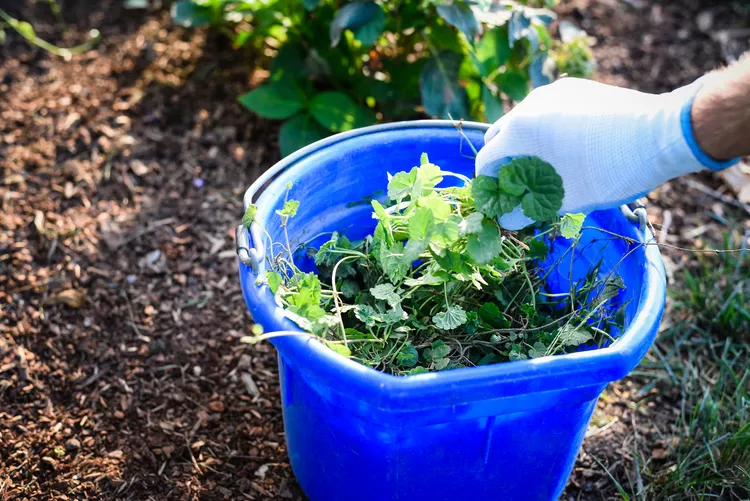Creeping Charlie (Glechoma hederacea) is an aggressive weed that prefers moist, partly shaded areas. However, it grows almost as well in the sun and spreads quickly into lawns and planting beds. Also called ground ivy, the plant is in the mint family, which is known for its tendency to spread.
This shallow-rooted weed has a minty odor when cut or crushed, square stems, and small, tubular flowers like other mint relatives. Kidney-shaped or rounded leaves with scalloped edges grow low to the ground along vining stems or runners. If you try to pull up this weed, you'll notice that these stems can root at each node where the leaves attach, making it seem like the plant is hanging on for dear life.
How to Control Creeping Charlie
Repeated hand-weeding is an option if you've spotted creeping Charlie early, but you must remove and destroy every bit of the roots. Don't add this plant to the compost bin because it could take root there. It's better to bag it for yard waste pickup.
If creeping Charlie has spread throughout a large area, it is difficult to control through hand-weeding alone. When it takes over a space where you don't plan to grow anything for at least six months, you can smother it under layers of cardboard or sheets of black plastic. If it's in your lawn, a broadleaf herbicide is effective, but it should be applied in early fall so the plant takes the product down to its roots, weakening it as it goes dormant for winter. The most effective broadleaf herbicide for creeping Charlie contains triclopyr, generally in combination with 2, 4-D, and Dicamba. Standard herbicides without these components don't work as well.
Always read and follow label directions when using herbicides to avoid harming yourself and the environment.
Some years ago, the application of borax was suggested as a herbicide, but it's not effective. In addition, applying borax to the soil, even in small amounts, makes the soil less able to support lawn grasses and other desirable plants.
How to Keep Creeping Charlie From Returning
The presence of creeping Charlie signals that the growing conditions for your lawn may need to be addressed. Too much shade, wet soil, or poor fertility could be issues. A healthy stand of turf makes it harder for creeping Charlie to invade your yard. You might choose to plant a groundcover that performs better than lawn grasses can. Any open areas in your landscape, such as planting beds, can be areas where creeping Charlie pops up. Keep the areas well-mulched to reduce problems with it and other weeds.




















